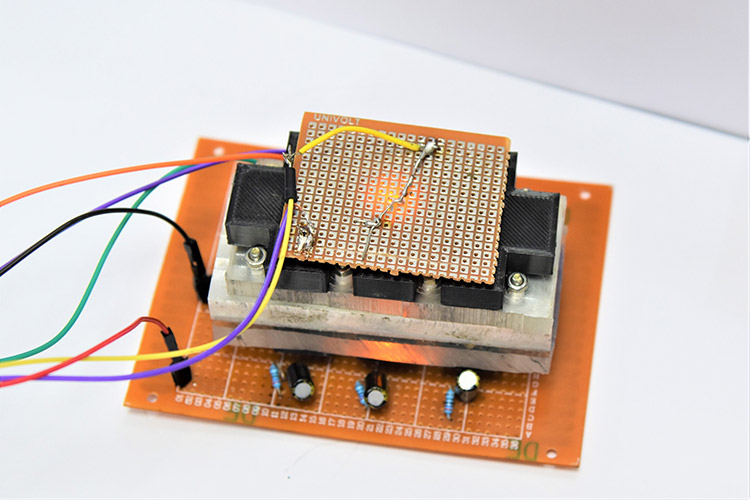
Photonic Device to Enable Bio Experiments in Space
Researchers at the Indian Institute of Science (IISc) and the Indian Space Research Organization have developed a modular, self-contained device to cultivate micro-organisms. The work could enable biological research in outer space.
Using an LED and photodiode sensor, the device can track the growth of a bacterium called "Sporosarcina pasteurii" over the course of several days, and with minimum human involvement.
The LED and photodiode sensor combination can track growth by measuring the optical density or scattering of light, similar to spectrophotometers.

A modular, self-contained device to cultivate micro-organisms, which could enable scientists to carry out biological experiments in outer space, uses a photodiode sensor and LED to track bacteria development with minimal human involvement. The device can also be adapted for nonbiological experiments. Courtesy of G Sai Santosh.
Understanding how such microbes behave in extreme environments could provide valuable insights for human space missions. “Gaganyaan,” India’s first crewed spacecraft, is set for launch in 2022. Recently there has been increased focus on the use of lab-on-chip platforms that combine many analytical modes into a single integrated chip for such experiments. However, there are additional challenges to designing these platforms for space as compared to the lab.
“It has to be completely self-contained,” said Koushik Viswanathan, assistant professor in the department of mechanical engineering and a senior author of the study. “Besides, you can’t simply expect the same operating conditions as you would in a normal laboratory setting … and you can’t have something that guzzles 500 W, for example.”
The device also features separate compartments to conduct different experiments. Each compartment, or “cassette,” consists of a chamber where bacteria — suspended as spores in a sucrose solution — and a nutrient medium can be mixed to facilitate growth by remote activation.
Three cassettes are grouped into a single cartridge that consumes just under 1 W of power. The researchers envision that a full payload that could go in a spacecraft will contain four such cartridges capable of carrying out 12 independent experiments.
“This is a nontraditional environment for the bacteria to grow. It is totally sealed and has a very small volume. We had to see whether we would get consistent [growth] results in this smaller volume,” said Aloke Kumar, associate professor in the department of mechanical engineering and a senior author of the paper. “We also had to make sure that the LED going on and off doesn’t generate much heat, which can change the bacterial growth characteristics. ”
Using an electron microscope, the team was able to confirm that the spores grew and multiplied into rod-shaped bacteria inside the device as they would have under normal conditions in the lab.
“Now that we know this proof-of-concept works, we have already embarked on the next step — getting a flight model [of the device] ready,” Viswanathan said. This would include optimization of the physical space that the device can take up, as well as its performance under stresses such as vibration and acceleration due to gravity.
The device can also be adapted for studying other organisms such as worms, and for nonbiological experiments, the researchers said.
The research was published in Acta Astronautica (www.doi.org/10.1016/j.actaastro.2021.08.016).
Published: September 2021